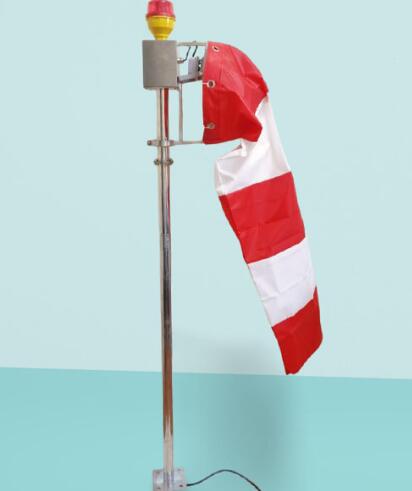Wind Cone: The Essential Guide to Understanding Its Role in Aviation Safety
The wind cone, also known as a windsock, is a simple yet indispensable tool in aviation. It provides pilots and ground personnel with real-time wind direction and speed information, ensuring safer takeoffs, landings, and ground operations. Despite its basic design, the wind cone plays a crucial role in maintaining aviation safety, particularly at smaller airports and airstrips where advanced wind measurement systems may not be available.
This article explores the importance of the wind cone, its design and functionality, and its critical role in aviation operations.
What Is a Wind Cone?
A wind cone is a conical textile tube mounted on a pole, designed to indicate wind direction and approximate speed. It is typically made from durable, weather-resistant materials such as nylon or polyester and is often brightly colored (usually orange or red) for high visibility.
How Does a Wind Cone Work?
The wind cone operates on a straightforward principle:
Wind Direction: The open end of the cone aligns with the wind, pointing in the direction from which the wind is blowing.
Wind Speed: The angle at which the wind cone extends provides an estimate of wind speed. A fully extended cone indicates strong winds, while a limp cone suggests calm conditions.

Pilots rely on this visual cue to adjust their approach and landing strategies, especially in variable wind conditions.
The Importance of Wind Cones in Aviation
1. Enhancing Safety During Takeoff and Landing
Wind conditions significantly impact aircraft performance. Pilots need to take off and land into the wind to maximize lift and control. The wind cone provides immediate visual feedback, helping pilots make quick and informed decisions.
| wind cone |
2. Supporting Ground Operations
Ground crews, including baggage handlers and refueling teams, also monitor the wind cone to ensure safe working conditions. Strong crosswinds can affect ground equipment and personnel safety, making the wind cone a vital tool beyond just flight operations.
3. Backup for Electronic Systems
While modern airports use advanced anemometers and digital wind indicators, the wind cone remains a reliable backup. In case of power failures or technical malfunctions, the wind cone ensures continuous wind monitoring.
4. Essential for Small Airports and Remote Airstrips
Many smaller airports and private airstrips lack sophisticated wind measurement systems. The wind cone serves as a cost-effective and low-maintenance solution, ensuring basic wind data is always available.
Design and Standards for Wind Cones
Not all wind cones are the same. Aviation authorities, such as the Federal Aviation Administration (FAA) and the International Civil Aviation Organization (ICAO), set specific standards for their design and placement:
Visibility: Must be easily seen from the air and ground, even in low-light conditions.
Size and Proportion: Typically 3.6 meters (12 feet) in length, with a maximum diameter of 0.9 meters (3 feet).
Placement: Positioned in an unobstructed area, away from buildings or trees that could alter wind flow.
Lighting: Often equipped with lights for nighttime operations.
Maintenance and Durability
Since the wind cone is exposed to harsh weather, regular inspections are necessary to ensure functionality. Key maintenance practices include:
Checking for tears or fading that may reduce visibility.
Ensuring the mounting structure remains stable.
Replacing worn-out cones promptly to avoid misleading wind readings.
Beyond Aviation: Other Uses of Wind Cones
While primarily associated with aviation, wind cones are also used in:
Industrial Sites: Chemical plants and refineries use them to monitor wind direction in case of gas leaks.
Marine Operations: Ports and docks utilize them to assist with ship navigation.
Environmental Monitoring: Scientists use wind cones in field studies to track wind patterns.
The wind cone may seem like a simple device, but its contribution to aviation safety is immense. By providing real-time wind data, it helps pilots make critical decisions, supports ground operations, and serves as a fail-safe when electronic systems fail. Whether at a major airport or a remote airstrip, the wind cone remains an essential tool in ensuring safe and efficient air travel.
